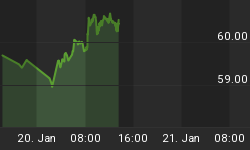It is hard to feel very sorry for investors who were surprised over the weekend by "signs Europe's government-debt crisis is worsening and the economic recovery is slowing." Those signs have been there for months; if you had to wait for Italy to be downgraded by S&P on Friday and for Spain's ruling party to be gashed in local elections before you understood that yes, the periphery countries are having troubles, then you really should stop listening to the politicians.
This is another symptom of the trust-in-central-bankers disease. Investors try to eke out extra return by taking on more risk, trusting that if anything goes truly wrong the Fed or the ECB will intervene and help them out. Clients turn up their noses at strategies that match asset risks to liability risks (LDI) and other lifesaving institutional strategies, and insist on commitments to strategies that exceed some fantasy-derived "hurdle rate" that makes their situation seem tenable, actuarially, as long as things don't get really ugly.
It's a delicate operation, as investors take calculated risks with calculators that are a bit skewed. It is reminiscent to me of the opening scene in Raiders of the Lost Ark when another 'investor' is trying to get something for nothing. But sometimes, Indiana Jones doesn't measure the sand in the bag exactly right and a great big boulder comes rolling right at him. This happens to investors all the time. The difference between Indiana Jones' risk-taking and that of the average investor is that Indiana doesn't expect someone to come save him from the rock. Consequently, he plans his operations with just enough margin of safety so that he can escape before he is crushed.
Some people were doubtless crushed by the Greek bond market over the last couple of days. The 10y yield rose more than 100bps (to 16.6%) and the 2y jumped to 26.25%. Both of these are highs for the crisis. The Irish 10y is at a new high of 10.63% and Portugal's 9.38% is just a bit below the April high yields. Run, Indy, run!
Equities around the globe did poorly. The S&P's 1.2% loss was better than what was seen in Europe (-1.9% on the FTSE, -2.1% on the CAC 40, -2.0% on the DAX) but they are all just different stages of red. The technical picture is messier than what I showed several days ago, but clearly negative. The dollar popped higher on Europe's troubles, and reached the highest levels since April Fools' Day. Commodities suffered, but not too badly ex-Livestock.
Bonds did well as might be expected in a flight-to-quality, but not as much as you might expect (US 10y 3.12%, down 3bps). And the VIX rose, but is still comfortably in the range of the last few months. Indy is running, but he isn't really nervous yet.
Is that because investors think there isn't a real problem? Or is it because they figure the central banks will ride to the rescue again? My fear at this point is that central banks don't really have much they can do except more of the same. And if one of the periphery countries makes the eminently defensible decision to try the Iceland route and undertakes to exit the Euro and default, I'm not sure all the king's horses and all the king's men will be able to put the European banking sector together again.
In my own investing, it is difficult to figure out what makes a suitable hiding place. I am not worried about people laughing because I missed another 20% rally in equities. I know that while Indiana Jones might always survive, the median lifespan for people who follow that approach is still pretty low. I am just worried about finding a hiding place the rock cannot reach. Equities are a non-starter. Even stable dividend-payers of commodity producers have positive beta, and if equities swoon those solid companies are going down with them. Treasuries are exposed to inflation, and TIPS are still too expensive to have more than a token allocation (0.80% yield for the 10y) although as a true bunker they are hard to beat. Commodity indices are great but subject to abrupt repricing on growth fears. Our multi-asset model still leans heavily towards commodity indices and cash, but in the bond world I also find Australian Index-Linked bonds enticing with real yields above 2%. True, the OZ central bank is being more responsible than most, but most inflation for any country comes from global sources and the more responsible central bank will tend to keep the currency stronger than the USD. The difficulty is that as an individual investor it is quite hard to invest in Australian inflation-linked bonds!
There is not much data due tomorrow. The forecast for New Home Sales has institutionalized "flat-lining" with an expectation for an unchanged 300k in annualized sales. For the last 11 months, the range has been 270k-334k with an average of 295k, so this seems reasonable. However, there has been a distinct tendency for more sales to close in the last month of a quarter and for the first month of the next month to be a down month (see Chart) so there may be a little downside risk to that expectation...but it really doesn't matter at these absolute levels.

New Home Sales - a small tendency for an uptick in the last month of a quarter.
Additionally, there are five Fed speakers (Duke, Rosengren, Hoenig, Plosser, and Bullard) on the schedule. The boulders to watch out for, though, will again come from overseas.















